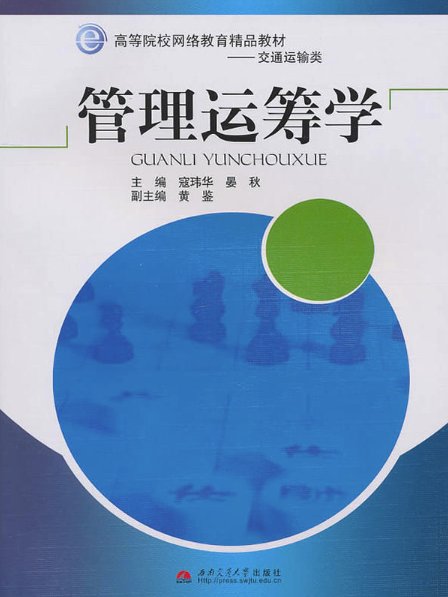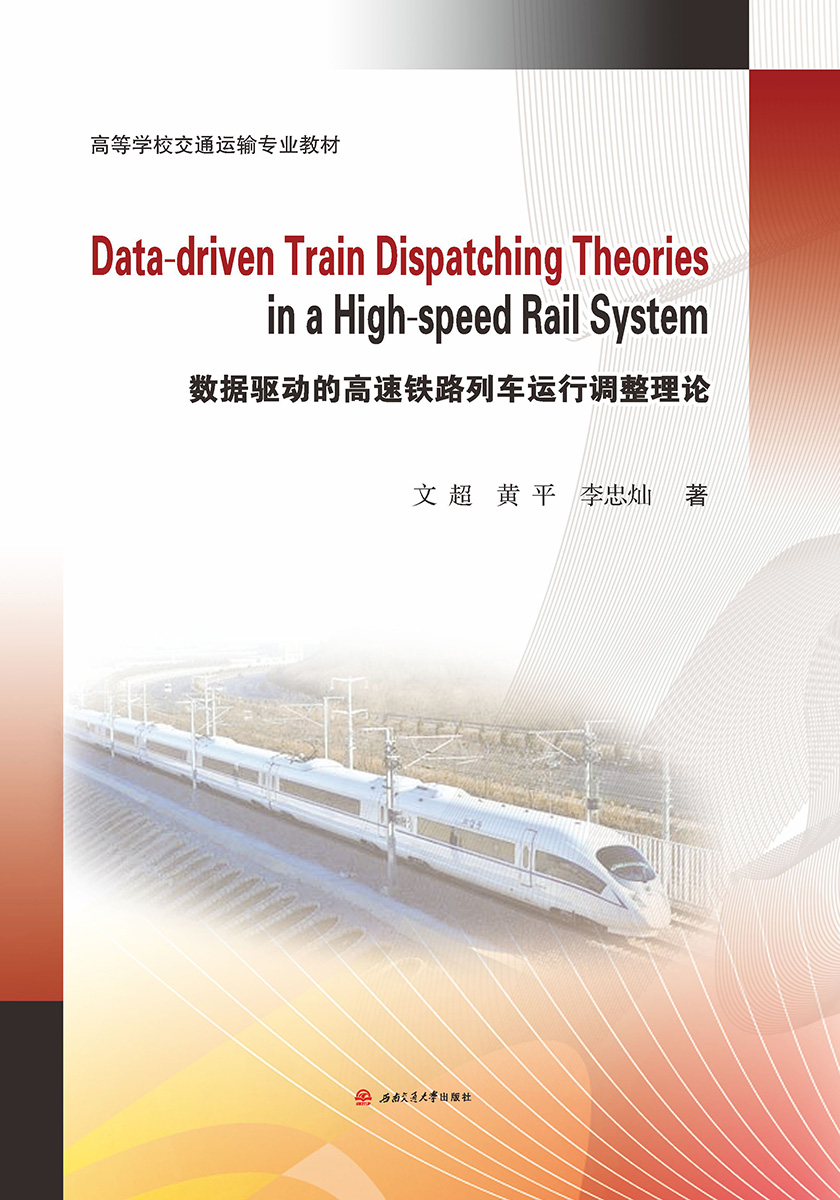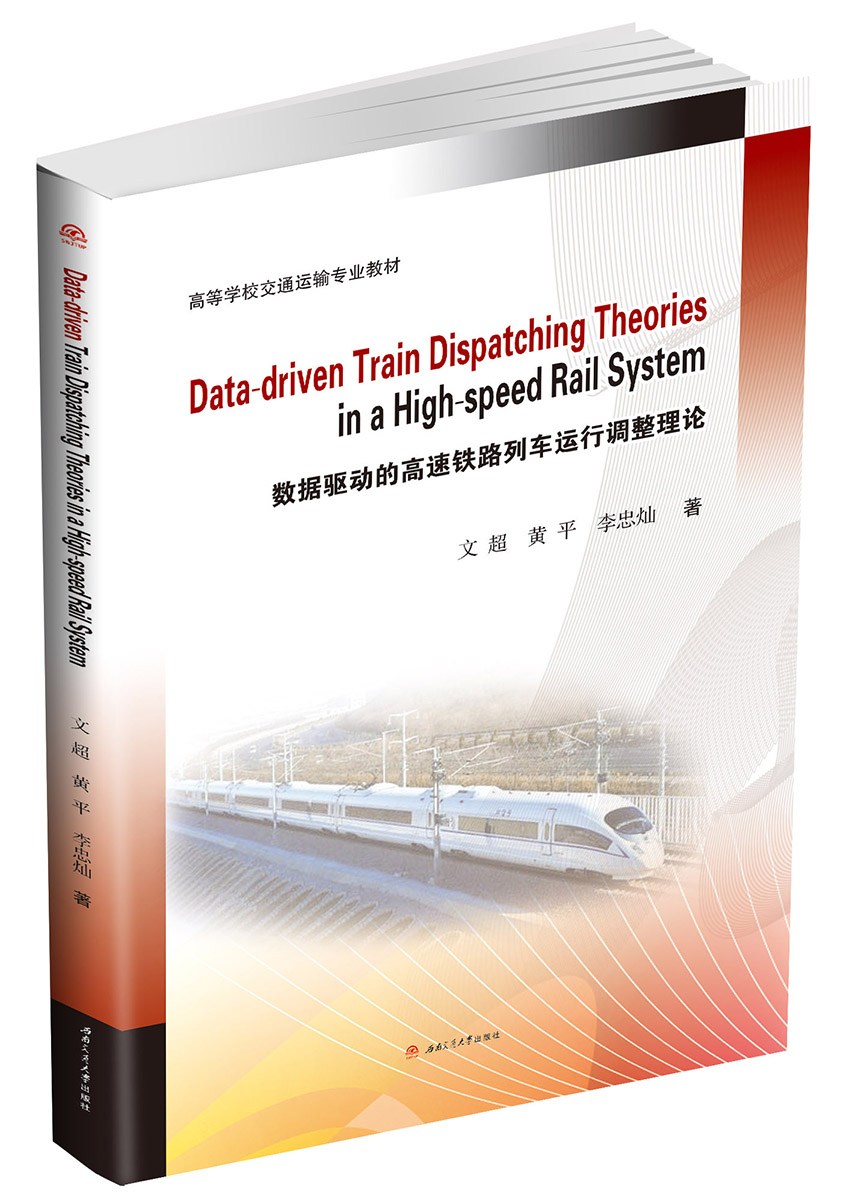-
 电力系统分析
电力系统分析作者:李仙琪 侯德明 尹 虹 刘卓敏
本书是为高职高专学校电气工程专业编写的教材。高职高专学校以培养应用型人才为目标,即培养“具有良好职业素质,具有熟练的职业技能,具有系统的应用知识和持续的发展能力”的高技能人才。为适应高职高专学校人才培养目标的要求,本教材按“理论够用、注重应用”的原则来选择内容,注重理论联系实际,重点介绍基本概念及基本计算方法,省略繁琐的理论推导,并力求由浅到深,易讲易学易懂。同时书中配有丰富的例题,每章后还有一定数量的习题和思考题,以方便学生自学和对照复习。建议对该书的学习分暂态和稳态两部分进行,用两个学期完成。
电力系统从规划、设计到建设,再到运行和管理,是一个庞大的系统工程,“电力系统分析”这门课程所涉及的内容和技能是这个庞大系统工程的专业理论基础。本课程作为电气工程类专业的一门必修课,作为后续课程的知识先导,将重点介绍电力系统在规划、运行和管理方面的基础知识、基本原理和实用计算。学生通过学习这门课程,能了解和掌握运行、调整、计算及管理等方面的基础知识和基本技能,增强计算机应用能力,初步形成解决实际问题的能力,为后续专业课程的学习奠定知识基础,为解决电力系统中的实际工程问题打下基础,使学生具备高素质劳动者和电气技术应用人才所必需的素质。
本书依据西南交通大学出版社《21世纪高等职业技术教育规划教材——电气工程类》编写研讨会审定的课程大纲而编写,对第一版中出现的错误进行了订正,并增加了部分内容。本书由贵州电力职业技术学院的李仙琪、刘卓敏、尹虹、庹曲、严竹影和重庆水利电力职业技术学院的侯德明、张莉共同编写。
该书的编写得到了相关学校领导及多家发、供电企业的大力支持和帮助,在此深表感谢。书中引用和参考了大量的文献,在此对这些文献的原作者也表示衷心的感谢。 -
 管理运筹学
管理运筹学作者:寇玮华
运筹学是一门主要研究有关策划、管理、预测分析等方面问题的学科,随着客观实际的发展,运筹学的许多内容已经深入到日常生活当中。本书所介绍的运筹学内容主要面向网络学院的学生。在编写方面,本书着重介绍运筹学的基础原理和方法,注重培养学生解决实际问题的能力。全书共分为六章,主要内容有:线性规划基础、单纯形法、线性规划模型的建立、对偶问题及对偶单纯形法、运输问题、图与网络。另外,每章后附有作业与练习,便于学生巩固所学知识,有些章节后面有“特别提示”,便于学生牢记易混淆的知识点。
-
 智能交通系统(Intelligent Transportation Systems)
智能交通系统(Intelligent Transportation Systems)作者:王晓原 孙锋 郭永青
本书是在收集近年来国内外ITS最新研究成果的基础上,结合作者在这一领域的科研和教学实践编写而成的。全书采用中英文对照的形式,内容新颖,共分为八章:第一章介绍什么是ITS,第二章介绍ITS是如何工作的,第三章介绍ITS体系框架和标准,第四章介绍ITS的效益,第五章介绍如何进行ITS的规划和投资,第六章介绍如何启动ITS,第七章介绍转型及发展中国家的ITS,第八章介绍ITS的发展趋势。本书可作为开设“智能交通系统”课程的教材或讲义,也可为从事智能交通系统设计、开发和运营等工作的相关工作人员提供理论、方法和应用案例。
图书分类
Book classification- 本书分析了高速列车运行数据的获取、筛选方法,研究基于高速铁路列车运行实绩,综合运用现代统计方法及模型、机器学习和深度学习方法、强化学习理论,在解析晚点分布规律的基础上重点研究数据驱动的列车晚点传播与恢复理论与方法,提出基于冗余时间运用效率及晚点恢复最大化的冗余时间优化布局方法,建立数据驱动的高速铁路列车运行调整理论。本书的主要内容包括:高速列车晚点的宏观分布规律;晚点横向、纵向传播的宏观规律和微观...查看更多
- 前 言// PREFACE
The large-scale construction and operation of the high-speed railway have achieved remarkable results ...查看更多
-
目 录// CONTENTS
Chapter 1 Train dispatching management with data-driven approaches:
A comprehensive review and appra...查看更多 - 文超,西南交大交运学院副教授,加拿大滑铁卢大学博士后,国际铁路运营研究协会会员,云上贵州大数据科学应用研究中心特聘专家,研究领域为铁路运输组织优化理论、交通运输大数据应用等。





